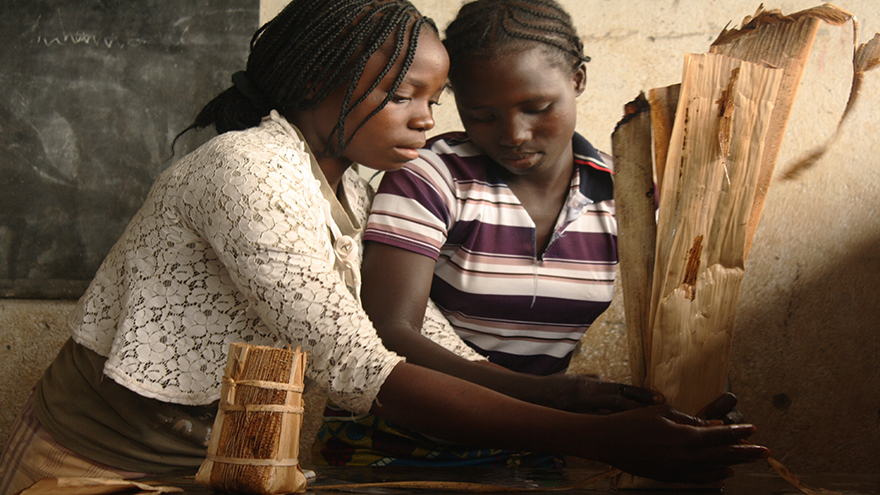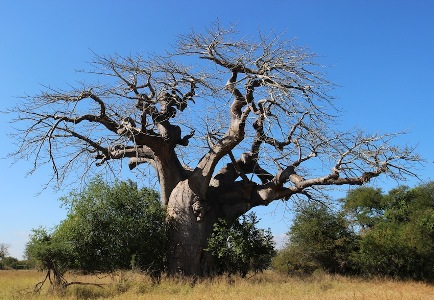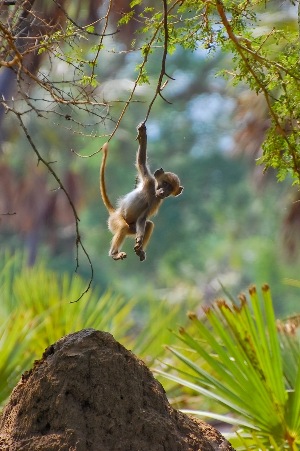Mozambique’s Gorongosa National Park – a phoenix rising from the ashes
Interview with Gregory C. Carr, American entrepreneur and philanthropist who will be a keynote speaker at the IUCN World Parks Congress taking place in November in Sydney.
For the past 10 years, Greg Carr has been on a mission to restore Mozambique's famous Gorongosa National Park - which has been ravaged by civil war and environmental destruction - and to help the local people who depend on the natural resources of the greater ecosystem.

How did you get involved in Gorongosa National Park? What are some of the opportunities and challenges you have encountered during this 10-year journey?
I was looking for a philanthropic project in Africa when I met the Mozambican Ambassador to the UN, Carlos dos Santos, in New York in 2002. He encouraged me to come to Mozambique and said that the country welcomed NGOs and public-private partnerships.
I went to Mozambique in 2004 and was enchanted by its beauty and opportunity. At the time it was considered to be one of the poorest nations in the world, but it had opportunity. I met the then-president of the country, Joaquim Chisanno and we discussed ideas.
I returned to Cambridge, Massachusetts where I was living and asked myself what Mozambique could do to build its economy? I thought about all the nations surrounding Mozambique that have multi-billion dollar safari tourism industries and wondered if Mozambique could have the same. I did some research and heard about this almost forgotten national park - Gorongosa. In the 1960s it was considered one of the best national parks in Africa and it was central Mozambique’s economic engine.
But the park had suffered terribly during a generation of war in Mozambique and 95% of the large animals had been killed. I thought to myself: if we restore and protect this park we can save biodiversity and help people at the same time. So we worked with the Government of Mozambique to create a public-private partnership for an ‘integrated conservation and development project’ - the Gorongosa Restoration Project. We not only work in the park, but also in a sustainable development zone around it.
Gorongosa faces threats that go well beyond the loss of wildlife during the long war and its aftermath. When I arrived in the early 2000s, I found open pit gold mines on the western border that were encroaching on the park. There were professional logging companies right in the centre of the park, taking out massive hardwoods. Also, small family farmers had expanded their activity inside the protected area border.
Like many other African countries, Mozambique has not been spared the current rampant poaching crisis. How did you tackle this?
We realised that we would need to help the people living in the 600,000-hectare sustainable development zone around the park while we simultaneously protected and restored the 400,000-hectare ecosystem within the park borders.
In January 2008, I signed a 20-year contract with the Government of Mozambique to co-manage the park and conduct development activities with the park’s neighbours. We created seven park departments: Conservation, Science, Community Relations, Administration, Tourism, Media Production, and Agriculture.

Girls making tree planters - Gorongosa National Park Photo Gallery
We see film and television as an essential tool to educate, inspire and build political support for Gorongosa. We create programmes in English, Portuguese and local African languages. And, in what might seem unusual for a national park, we have a Department of Agriculture – if we don’t help the farmers who live near the park increase the yields on their land, they’ll be tempted to expand into Gorongosa. We also help them sell their products in city markets.
Our Conservation Department is tough on poaching and illegal activities. They have done a good job and wildlife is now flourishing in Gorongosa. When I first arrived, I could drive all day and perhaps see one warthog. Now, wildlife is abundant. Our Science Department created the EO Wilson Biodiversity Research Center with the advice and participation of that eminent scientist. It is filled with both Mozambican and international scientists who are conducting a survey of all species in the park.
We invite a constant stream of Mozambicans to Gorongosa - it is their park, after all. Last year we had 4,000 children attend our ‘camp’, learn about ecology and have some fun on a safari. We also host Mozambican top politicians and VIPs to remind them that this is their world treasure.
Is political support for your work in Gorongosa increasing and is this bringing benefits to the local people?
So far so good. We are making progress. This year the Government of Mozambique passed a new Conservation Law. One of the articles of that law allows for the creation of Community Conservancies. We are enthusiastic about this and have identified five opportunities for Community Conservancies around the park, about 100,000 hectares in total.
The local people will own and manage these conservancies and derive the benefits. Not only will they become agents and beneficiaries of conservation, these conservancies will also provide additional buffer zones to help protect the core park.
Meanwhile, our Department of Community Relations is building health clinics and schools in under-served areas and helping local people obtain land rights.
We are in this mission for the long-haul.






